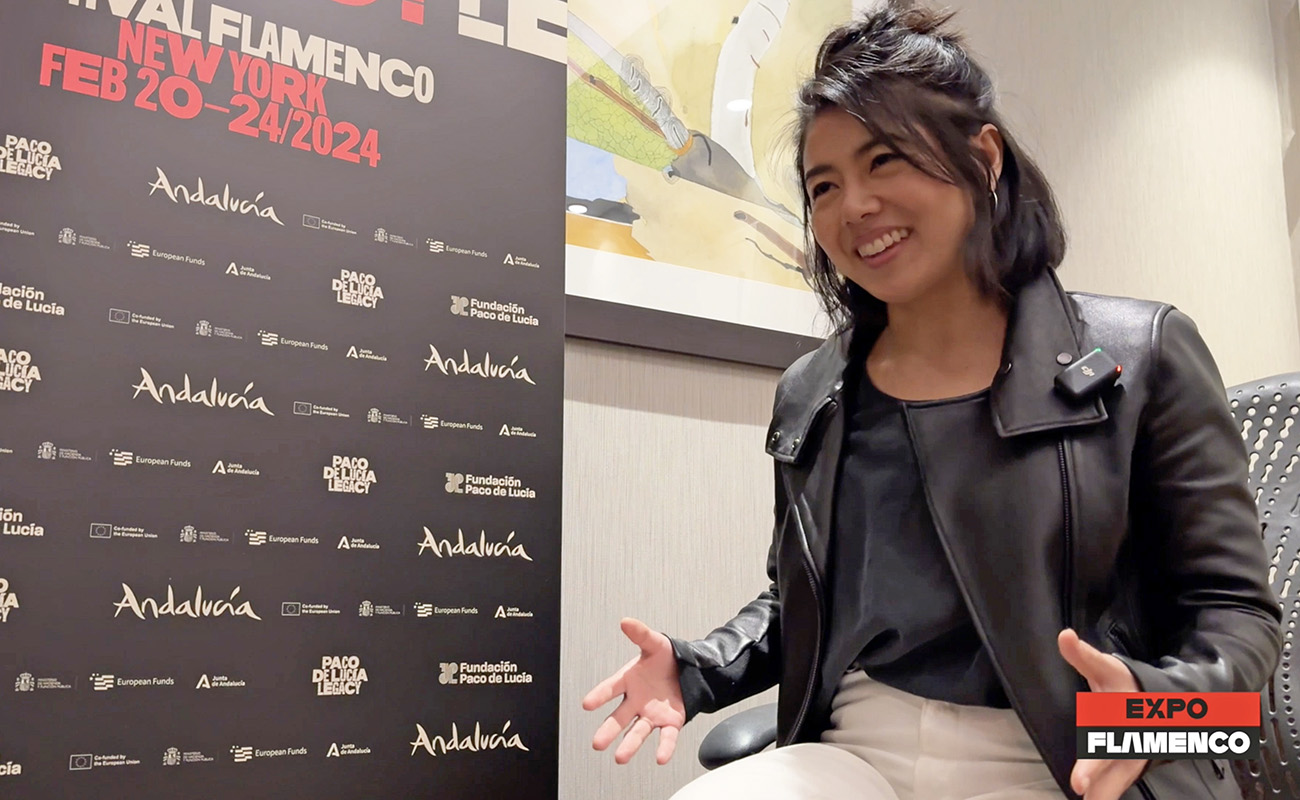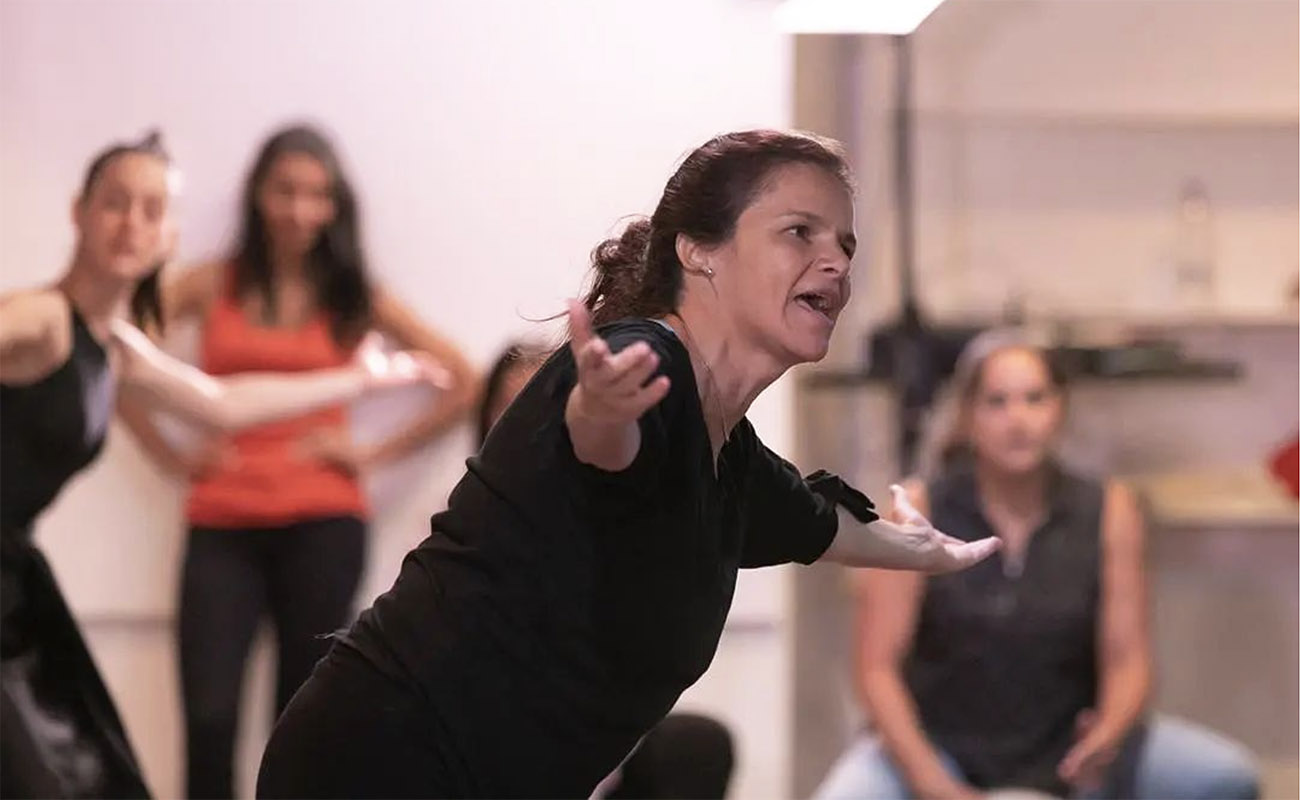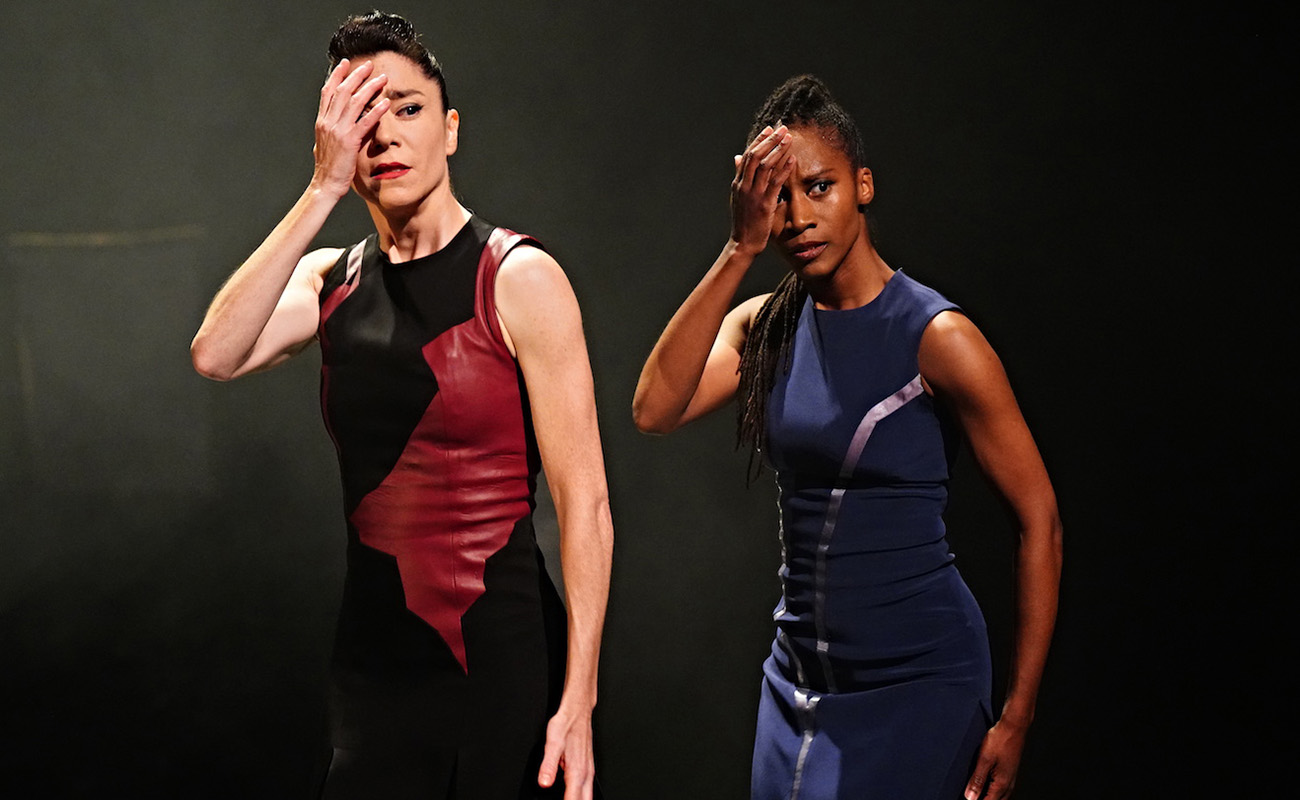Cristina Heeren: «If there are degrees for gastronomy or hairstyling, there should be degrees for flamenco, too»
Flamenco and ‘ojana’. Seriousness and frivolity. Amancio Ortega and the ‘Junta’. Triana and the people of Seville. A chat with the great patron of flamenco — the founder of the Cristina Heeren Foundation — gives us a lot to think about
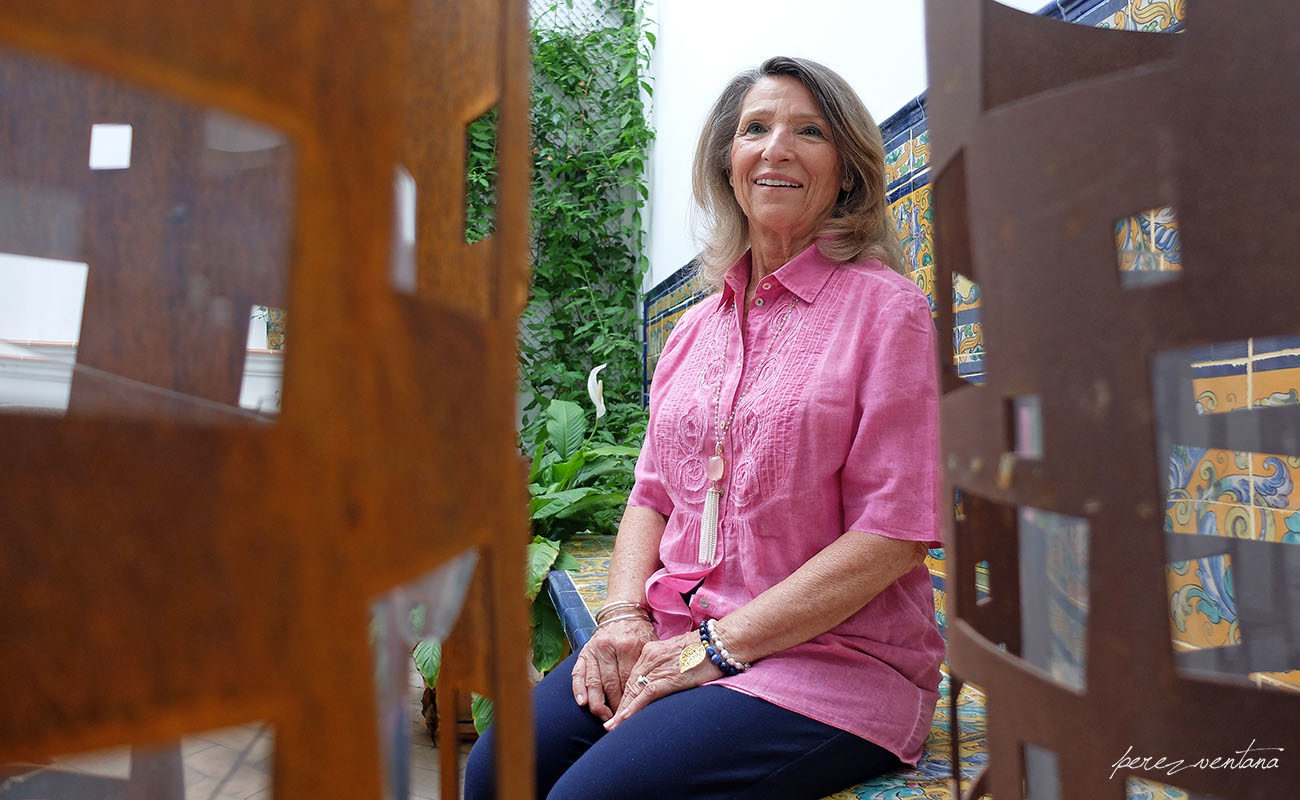
A website, this one, created in Vancouver, Canada, to promote flamenco in the world. An explicit backing of Andalusian art with foreign financing. This should sound familiar, doña Cristina. She nods. The institution that bears her name, Fundación Cristina Heeren de Arte Flamenco, has been doing just that for a quarter of a century. More than six thousand people have studied in this prestigious international school of flamenco, whose teachers have included maestros of the stature of Naranjito de Triana, Milagros Mengíbar, José de la Tomasa, Esperanza Fernández, Arcángel, Javier Barón, Calixto Sánchez, Carmen Ledesma, Paco Cortés and Rafael Campallo, among others. First opening in Seville’s Santa Cruz district and later relocating to the Heliopolis neighborhood, it’s now rooted in Triana, in an imposing 16,000 sq. ft. building which includes a charming stage with seating for 140 people, the Teatro Flamenco Triana: a new bright spot in Seville’s cultural calendar. Such is the mission of Cristina Heeren, North American Hispanist and patron of the arts, awarded the Orden Civil de Alfonso X and the Medalla de Sevilla. All of this without speaking with an Andalusian accent. «I don’t see a need to have an unnatural accent», she says. A few days ago, at the Teatro Central in Seville’s Isla de la Cartuja, the ExpoFlamenco staff attended the winners’ gala of the contest Talento Flamenco, promoted by the Cristina Heeren Foundation. The artistic level was extremely high. Our title for that show’s review said it all: “El flamenco no se acaba, al menos esta noche” (“Flamenco is not over, at least tonight”). As long as a new generation — such as the one coming daily to 76 Pureza Street — has that much knowledge and passion, it’s impossible for flamenco to ever die out. Doña Cristina nods in agreement.
– You have been a patron of flamenco for over 20 years. Are you comfortable being defined in this way, as a patron of flamenco?
– I would introduce myself as the president of a foundation that promotes flamenco and the teaching of all aspects of flamenco. And also as a flamenco aficionada.
– We have read that you first discovered flamenco in 1955, attending a performance of Antonio el Bailarín. Is it true that flamenco grabs us and never let go?
– Yes, it is probably true. Because I spent several years away from flamenco, when I lived in Paris working as film editor. Sometimes at night I wondered “well, what am I doing here?”. Eventually, it got all sorted out.
– When did you first thought that your main contribution to flamenco could be the creation of a school of flamenco baile, cante and toque…?
– Well, it wasn’t a plan. It was an idea that came up during a recording of José de la Tomasa. We were in France with José Luis Postigo and Pedro Bacán. Postigo said that it was a pity that there wasn’t any flamenco school whose teachers were renowned artists, because that would be an inspiration for the students. Then I thought, “well, it should not be that complicated to make this happen”. And when an idea gets into my head, I get to work on it… That’s what happened. It was in 1993. We had to create a foundation, get a board of trustees… We opened in 1996.
– Wasn’t there anything like it? Is there anything like it?
– I don’t think so. The important thing is to teach the three things at the same time. That reflects the future professional life of the students. They’ll be part of a team. I don’t think there’s anything like it. But I don’t think about these things. I just do my job. Our director, Pepa Sánchez, a great expert, has created an unbeatable academic program. My role is to assure it’s accomplished.
– What do you feel the most proud of, in these twenty three years leading the Foundation?
– I’m most proud of the results I see in the students here. They are well-versed, they acquire well-rounded knowledge. Then they go on winning important flamenco prizes such as the Lámpara Minera, joining important companies, going on great solo tours… That is really what encourages me to keep going.
«Here there is a strong opposition to the private sector. We can see this in the Amancio Ortega controversy with the most ridicule arguments I’ve heard in my whole life»
– Are there people who resent the fact that a foreigner comes here to set up the best flamenco school in Andalusia?
– I guess so, but I’m unaware of anyone in particular who feels that way. It’s a matter of doing a good job, everything else is not important. In any event, I don’t think it’s odd that a foreigner understands the worth of flamenco. This has always happened. Regarding the Spanish, the Andalusians, I think that not taking yourself too seriously is part of your charm. It’s a nice thing, too.
– Don’t we take ourselves seriously?
– You don’t take seriously the things you have.
– Can you imagine a Spaniard doing something like this in the United States? Creating a foundation to preserve jazz or blues?
– No, I can’t imagine it. Particularly someone from here, where there isn’t a tradition of contributing to art, to museums, to hospitals. Here there is a strong opposition to the private sector. We can see this in the Amancio Ortega controversy with the most ridicule arguments I’ve heard in my whole life. In the U.S., this man’s philanthropy is virtually demanded from people who earn a lot of money. Wealthy people are supposed to contribute to society. Yet, here, unless it’s done by the government, it’s deemed worthless.
– How long did it take for you to tell flamenco palos apart?
– It didn’t take long, because I have a good ear. What it’s harder for me to tell apart are the variations added by the old flamenco artists. I’d like to learn about this in Pepa’s classes. But it’s not that complicated, either.
– Most Andalusians can’t tell a soleá from a seguiriya.
– Of course, it depends. If someone is going to make a living off flamenco, it’s necessary to learn all that. If a cantaor goes to perform in a peña and is asked to sing a soleá de La Serneta, he can’t say he doesn’t know about it.
– Would you be able to recognize a soleá de La Serneta?
– Perhaps. Is not that hard.
«Baile is what has suffered the most in this flamenco evolution, the difference between female and male baile»
–When did you learn to tell flamenco jondo from ojana? You know those expressions, right?
– Yes, I could tell it right away, from day one. Otherwise, I would not be doing this job. Besides, I was surrounded by very traditional artists, as I wanted to, such as Calixto Sánchez, José de la Tomasa, Milagros Mengíbar… That’s the cornerstone I wanted to provide. After the students leave, they can do whatever they want.
– Is there a lot of ojana out there?
– Yes. Sometimes it helps, because it’s easier listening to ojana than listening to authentic flamenco. The truth is that there is a lot of flamenco-ish music out there, and it doesn’t bother me as long as people don’t call it “flamenco”. It’s all a matter of semantics, in my opinion.
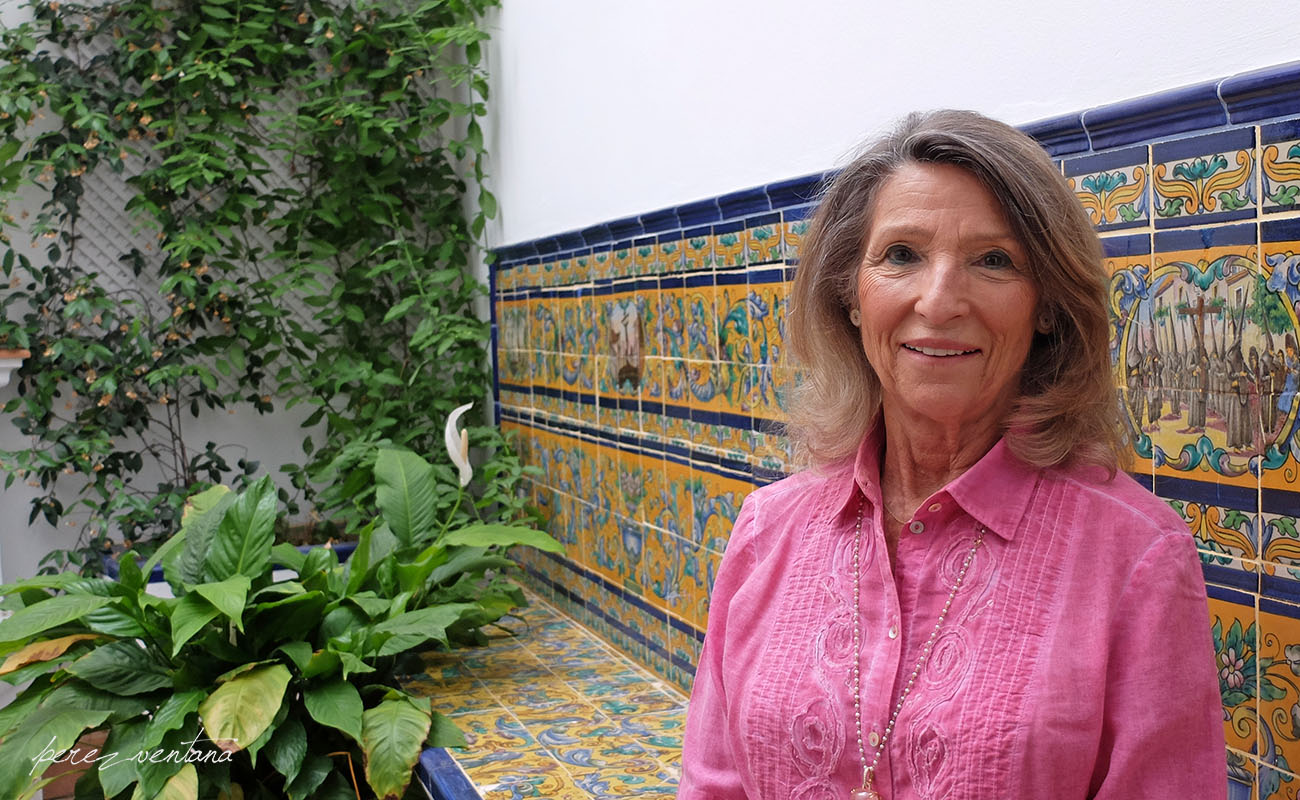
Cristina Heeren, in a courtyard at the headquarters of her Foundation. Photo: Quico Pérez-Ventana
– Is flamenco taken care of in Andalusia, like it deserves?
– No, I don’t think so. There is a great resistance by the Administration, in general. I’m struggling, for example, to certify our school. Since in Spain degrees are so important, we want to award our students an official degree. And, I don’t know why, I’ve been unable to achieve this. They don’t want to do things because they are new. Yet, at the beginning everything is new. I remember that a P.E. teacher used to be just a lady lifting up her arms. Now it’s a career. We have to begin somewhere, right?
– You mean a professional degree?
– Yes, that’s what I am pursuing. Some things can be achieved in Universities, but they’re more elitist. The people who come into the world of flamenco haven’t always finished primary school. Professional training is the way. If there are degrees for gastronomy or hairstyling, there should also be degrees for flamenco, which was created here.
– Do you think that flamenco is an art for the minority?
– Yes, certainly. Flamenco includes some harmonies that are uncommon in Western music. It’s hard to understand flamenco without studying it. Indeed, when I take a group to perform in the United States, I start with a short lecture about the history of flamenco, so people know what they will watch. This is a necessary aid for the North American public, who needs to understand things, not just to feel them.
– You said earlier that, above all, you were a flamenco aficionada. Indeed, we have seen you attending shows at the Bienal and in other manifestations of Andalusian culture. What is your opinion about the direction where flamenco art is going nowadays?
– I don’t think there is one single direction. There is a mixture of directions, some of them correct, others not so much. The Bienal has always been characterized by quantity instead of quality. I don’t know why it has to be so long and why it has to include things that have nothing to do with flamenco. I go back to semantics. If it’s not flamenco, then it’s not flamenco. Whatever. There are other musical genres. They exist. Some are wonderful. And I believe that baile perhaps has gone astray, the difference between female and male baile. Baile is what has suffered the most in this evolution.
– If, like someone said, man is his worst enemy, is flamenco its worst enemy?
– No, because that requires an intellectual exercise that doesn’t exist within flamenco.
«It’s easier for the government to give money to the unemployed, it looks nicer, instead of creating meaningful employment by promoting Andalusian culture»
– Do you feel that flamencos value all the work you’ve done in the last 25 years?
– Yes, I believe so, specially people close to me, I’m very thankful. I know it’s them who support me, we have the same vision, they encourage me. Yet, what I really seek is the success of the students. That’s what I care about.
– Any resentment?
– The lack of interest that I sense. This is serious, because it’s a matter of creating job opportunities. In the end, there is no interest. For the Junta de Andalucía is much easier to say “oh, what a pity, the unemployment” and hand out money to those unemployed. It looks nicer talking like that, instead of creating meaningful employment by promoting Andalusian culture
– They like to look nice, but then don’t commit, right?
– Exactly.
–Is there a ‘Cristina Heeren mold’ for the artists who learn flamenco in your classrooms?
– Yes, without a doubt. Artists are different among themselves — take El Choro and Alberto Selles, for example — but they reflect a creative mold within a traditional frame. I think that’s apparent. And their knowledge. They know what they are doing.
– Is there such thing as duende in flamenco? Have you seen it?
– Yes, like in any other art. In flamenco we call it duende, but in fact is just art, inspiration. It must exist, otherwise we’re not talking about art.
– Can duende be learned in a classroom?
– No. Duende is something people are born with. The most you learn, the greatest the freedom to express it.
«I don’t think that flamenco is held in higher esteem in other countries. They love it when flamenco is performed there, but they don’t give flamenco a special place»
– What remains to be done regarding flamenco education?
– A seal. A certification. And teaching about flamenco in the school’s classrooms. There has been a lot of talk about this for years, but politicians talk about many things and then the ideas get sidetracked. We’ll also try to exert some influence in this regard.
– Do you perceive any differences among your students, regarding if they are local or foreign?
– It’s hard to tell. Perhaps the foreign students, having made the extra effort of relocating to Seville besides paying for the course, may be a little more formal when it comes to studying. Yet, we shouldn’t generalize.
– Some renowned artists say that, outside Spain, flamenco is more highly regarded. More public goes to the theaters, it has more respect.
– I don’t know, I don’t think so. It’s easy to say these things, but we cannot measure this according to the number of applauses they get in foreign countries. I don’t think that flamenco is held in higher esteem in other countries. They love it when flamenco is performed there, but they don’t give flamenco a special place. Flamenco seduces, though, without a doubt.
– After living in Seville for 25 years leading this foundation, would you like to confess what bothers you the most about the people of Seville? .
– Should I say it? Hahaha. Their frivolity. I think Seville is the world capital of frivolity. Yet, it’s also the geographical center of Andalusia. So, we have no other choice than being here. We must be in Seville striving for Seville.
– Do you mean not taking seriously the important things? The posing?
– Yes, but not only that. The priorities. It seems as if having fun is the only important thing and everything else is secondary. I’m sorry to say this, OK?
Before visiting the fabulous facilities at the central headquarters of the Foundation at Pureza Street, in the heart of Triana, Silvia Calado and Alexandra Hoffer, in charge of communication and production in this institute, join our conversation. We talk about the great artists that have studied here: El Choro, Argentina, Manuel Lombo, Rocío Márquez, Luisa Palicio… «Did you know that Niño de Elche also studied here?», they tell me. «Yes, I had heard about it», I reply. «He himself disowns having studied here. You saw the mess he did at the Lope de Vega theater, seriously insulting flamenco art». Cristina Heeren intervenes: «It’s the fault of whoever included someone like him in the program of the Bienal de Sevilla». Ah, too bad I turned my recorder off. «You can write it down, not a problem».
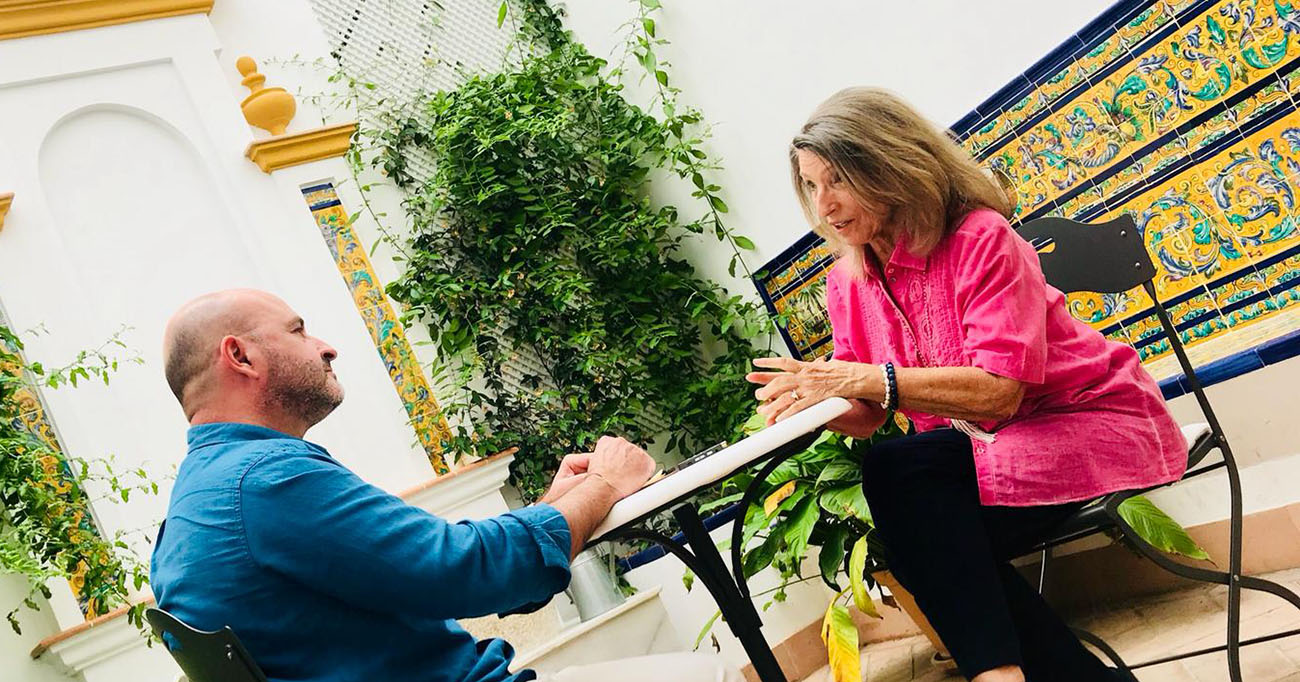
Cristina Heeren welcomes Quico Pérez-Ventana, editor of ExpoFlamenco, in a beautiful courtyard of her Foundation in Triana. Photo: Silvia Calado


